You can’t build a successful sales team with poorly defined sales strategies.
Consistency is key if you want to meet revenue targets month after month, year after year. And nothing breeds consistency like a detailed, repeatable sales cycle.
By outlining the steps your reps need to take to move each deal from first contact to close, you set them on the path to success. There’s no second-guessing about what they need to do next or where each prospect is in the buying process. Everything is laid out before them.
The good news is that almost every sales team follows a similar set of steps. That makes it easy for us to use this article to show you what those steps are and how you can improve them.
What is a sales cycle?
A sales cycle is the steps your reps take when converting a prospect to a buyer. Reps must complete each step before they can move to the next one, and they must complete the stages in order.
The stages of your sales cycle will largely follow the steps of your sales funnel. As you can see from the image below, it’s easy to map the sales funnel to your sales cycle.
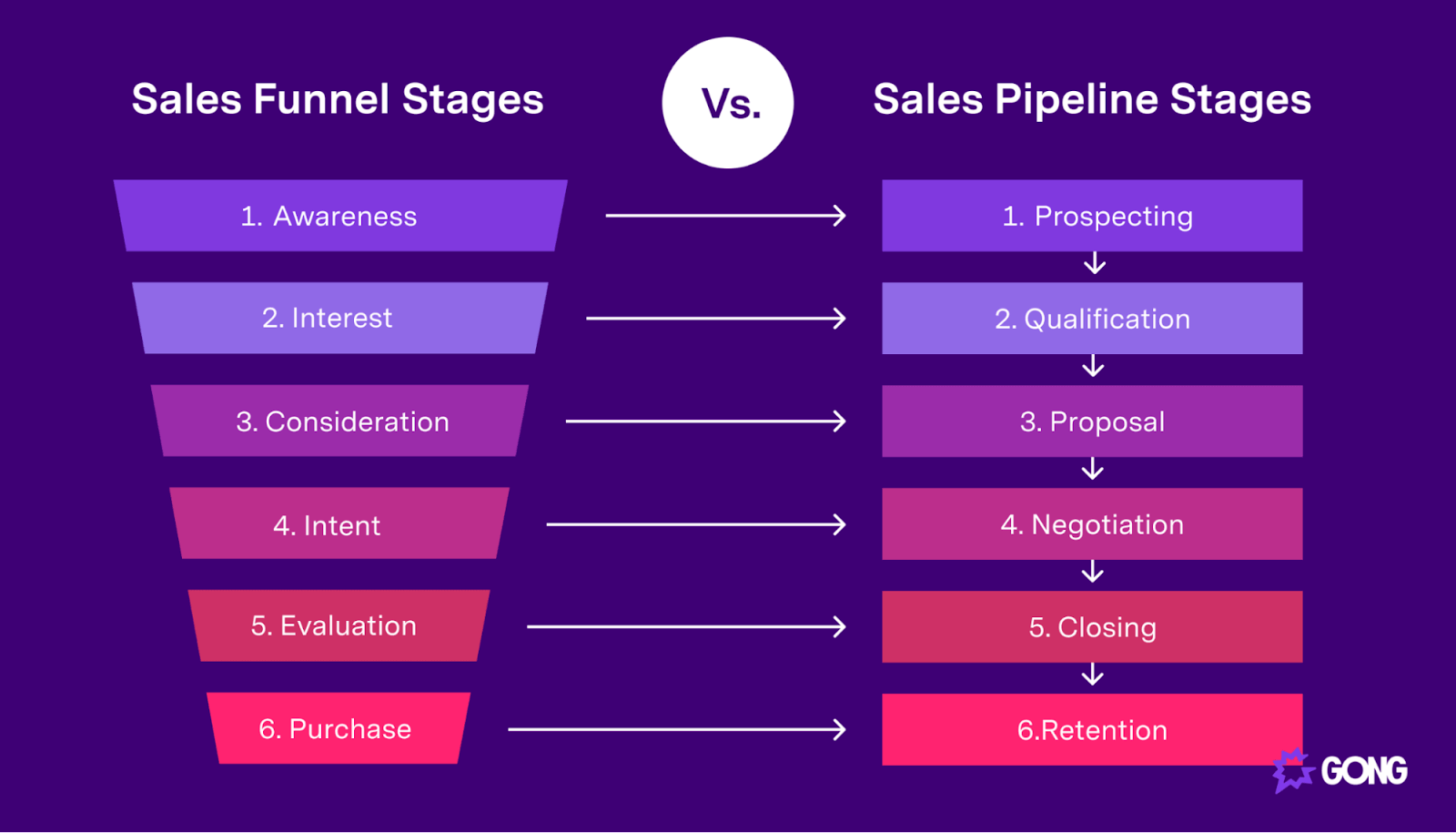
But the sales cycle isn’t the same for every company. Some sales cycles may be longer; others may have fewer sales stages. It depends on what you’re selling, how you’re selling it, and who you sell it to.
Why is a sales cycle important?
There are several reasons why it’s important to define and improve your sales cycle stages.
Get clarity on your processes
You don’t have a well-defined sales process if you can’t list the stages of your sales cycle. And it’s only by defining your process that you can show reps what they need to do and how they can reach their sales goals.
Onboard new reps faster
New sales reps can get up and running faster when there is a proven and repeatable process they can follow. Your sales cycle is exactly that. By clearly outlining the steps reps need to take to close a deal, they’ll need less handholding and be able to turn more prospects into customers than if they were left to their own devices.
Improve your team’s performance
Creating a sales cycle will also improve the performance of your existing team. It will help you understand which area of the sales process your reps struggle with so you can offer advice accordingly.
It may also help you restructure your team to better fit your sales cycle by having sales development representatives (SDRs) responsible for booking meetings and account executives who only close deals.
What are the seven stages of the sales cycle?
Below we outline the seven most common stages of a sales cycle and how your reps can improve their process at each sales stage.
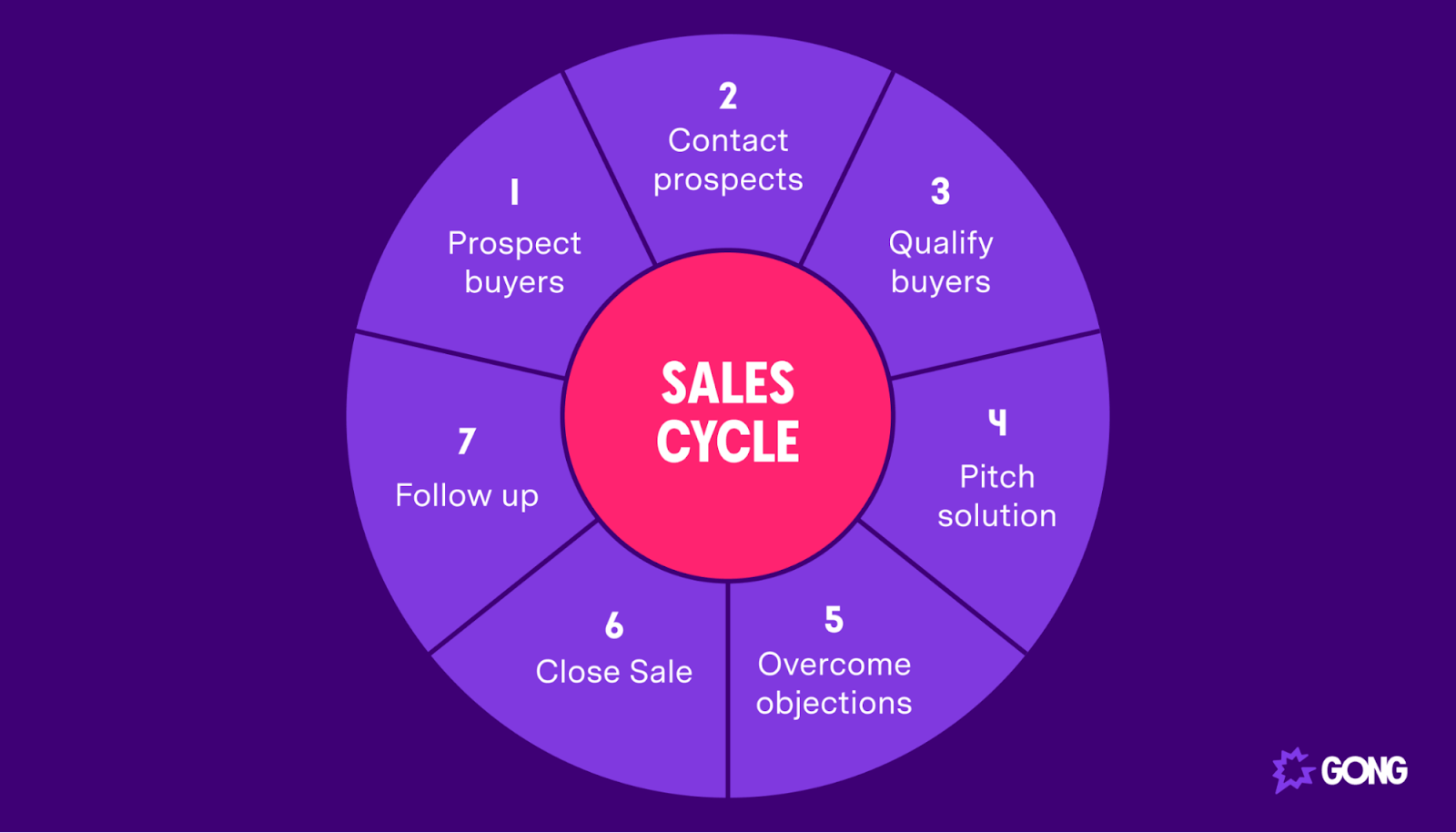
Let’s dive in.
1. Prospect buyers
Sales prospecting is the first stage of the sales cycle. Sales reps must find the right kinds of potential leads before they can do anything else.
To do that, reps need to understand what a great buyer looks like and have a way of finding potential qualified leads that fit the mold.
Improve this stage by:
Creating buyer personas and Ideal Customer Profiles (ICPs) if you haven’t already. A buyer persona describes the ideal person your reps should pitch to. An ICP is a description of the ideal company you should be targeting.
As you can see in the image below, a
A sales ICP should include the industry your ideal prospect works in, their average annual revenue, the number of employees they employ, the challenges they face, and more.
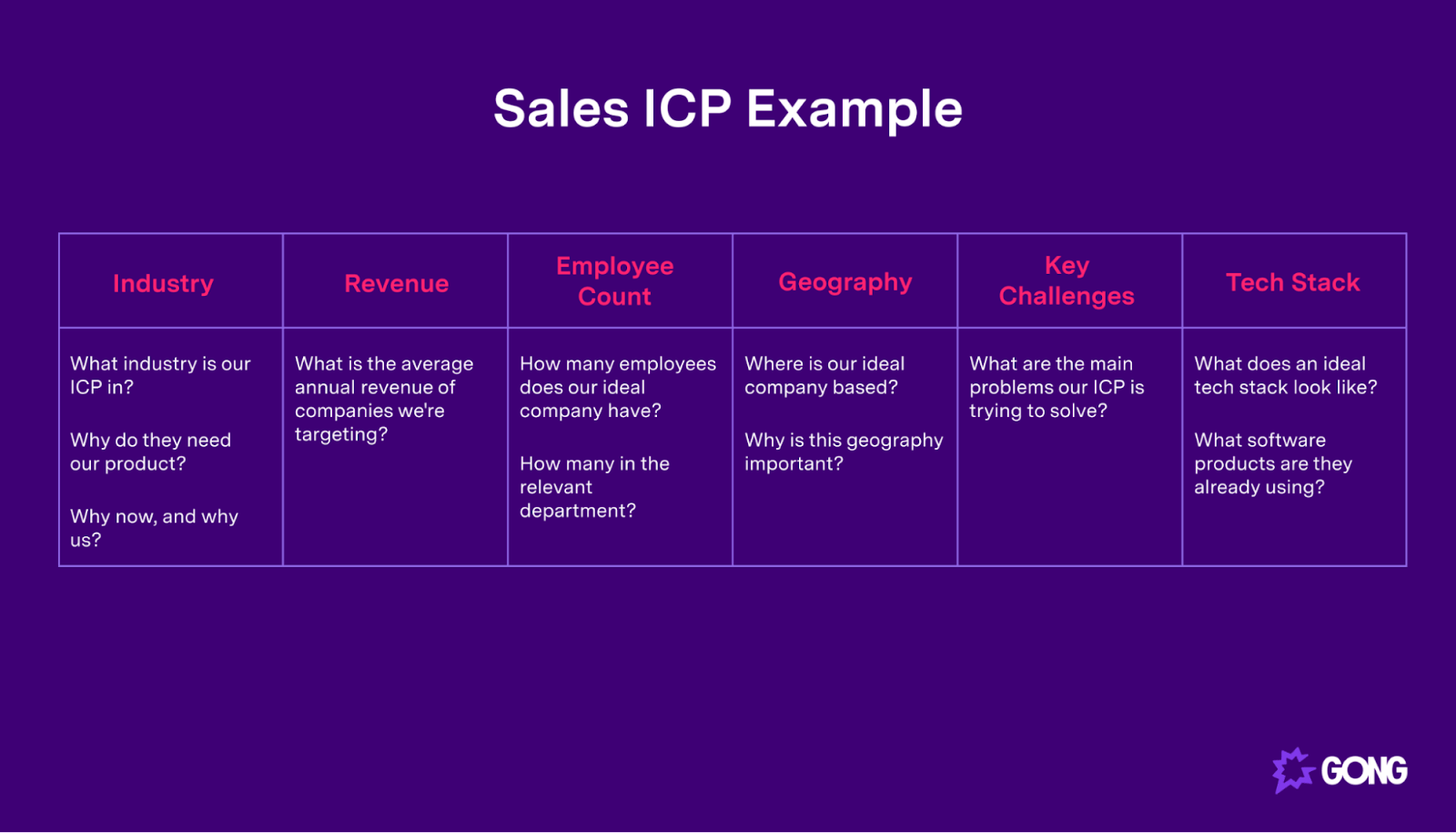
These are all quantitative characteristics you can use to identify companies to target. Searching an insights database like Crunchbase using the characteristics highlighted in your sales ICP can be a fast and effective way to generate a list of prospective buyers.
2. Contact prospects
Once reps have a list of people and companies who meet your ICPs and buyer personas, it’s time to reach out to them. There are plenty of ways to do so, including cold calling, emailing, and sending LinkedIn messages.
It may be old school, but reaching out by phone is still the preferred method of contact for closing sales and booking meetings, favored by 29% and 35% of businesses, respectively.
Improve this step by:
Having your reps brush up on their outreach sales technique. If they are a little rusty, refer them to our 10 proven prospecting tips to book more meetings.
These data-backed strategies include:
- Using your full name and company at the start of a call
- Clearly stating the reason for your call
- Keeping prospects on the line for as long as possible
- Booking a meeting time on the phone call
- Asking prospects how they’ve been
The last strategy is incredibly powerful. Calls that ask this question perform 6.6x better than those that don’t.
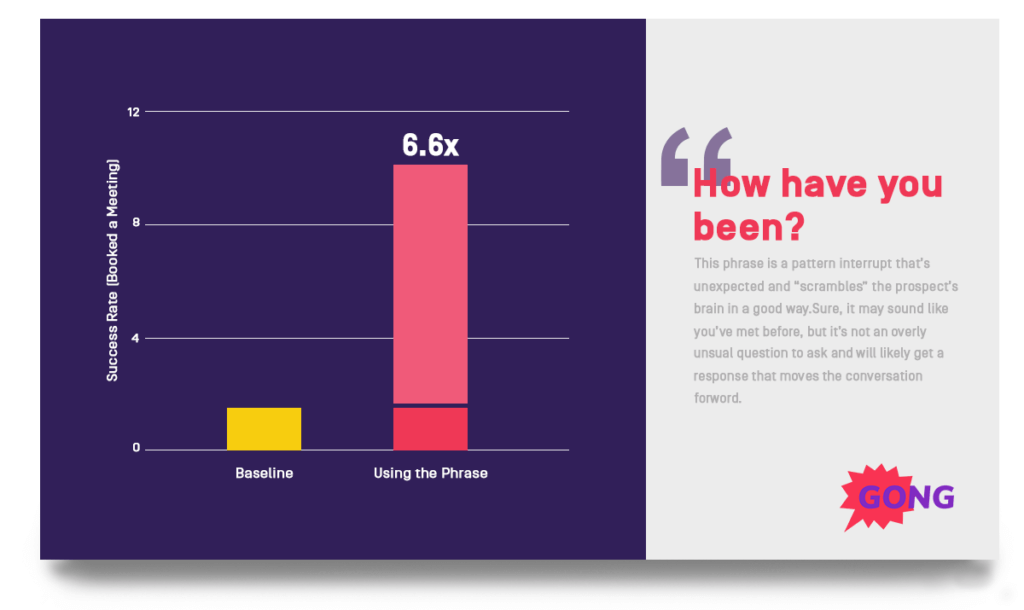
Why? Because it’s a pattern interrupt that takes the buyer by surprise (in a good way) and is likely to lead to a positive response that moves the conversation forward.
If you want even more help to get your reps selling well over the phone, download our highly effective cold calling scripts. These data-backed scripts give your reps everything they need to book a meeting.
3. Qualify buyers
Once your reps have made initial contact with prospects, they should start qualifying them immediately.
Just because reps have used characteristics from your ICP to narrow down their list of prospects doesn’t mean everyone on that list will be in a position to make a purchase. That’s why reps need to ask the right sales qualification questions to gauge how closely each prospect matches your ICP and whether it’s worth pitching them.
Specifically, your reps should be honing in on any pain points expressed by their prospects. You need to know what’s driving them to look for a solution so you can position your product to meet their needs.
If prospects aren’t qualified, reps shouldn’t think twice about ignoring them. By all means, make a note to follow up with unqualified prospects three to six months down the line, but your team should have plenty of people to call if they have prospected well enough.
Improve this step by:
Giving your reps an easy and repeatable process to speed up qualification. Enter BANT.
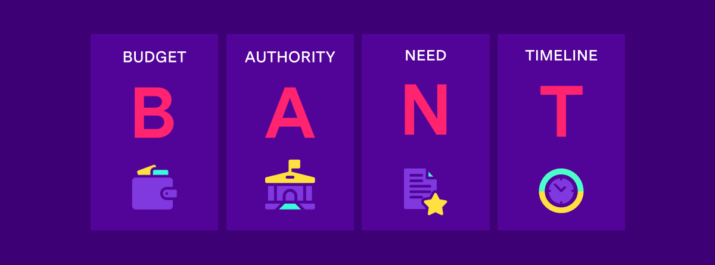
BANT stands for budget, authority, need, and timeline. You can consider prospects viable if they meet three of the four criteria. That means they have a budget to find a solution, the authority to make purchasing decisions, and a proven need, you can qualify them.
4. Pitch the solution
Hopefully, your reps have fully qualified each prospect and mined a lot of information they can use to put your product in the best possible light. Now it’s time to put all that information to use.
During the pitching stage of the sales cycle, prospects should use everything they’ve learned to personalize their pitch to the buyer. But don’t just let reps rely on their research. It’s the responsibility of sales leaders to arm reps with case studies and other sales collateral to help them pitch your product.
Improve this step by:
Improving the effectiveness of your rep’s sales pitch. In particular, they need to understand the five elements of a winning sales pitch:
- The nexus
- The problem
- The story
- The value proposition
- The evidence
But your reps probably aren’t going to close the deal after a single sales pitch. Multiple meetings will be required, especially if you sell to enterprise clients.
Encourage your reps to take their time with the process and not spend all of the first meeting presenting. Our research shows that it’s better to spend single digit minutes presenting in intro meetings.
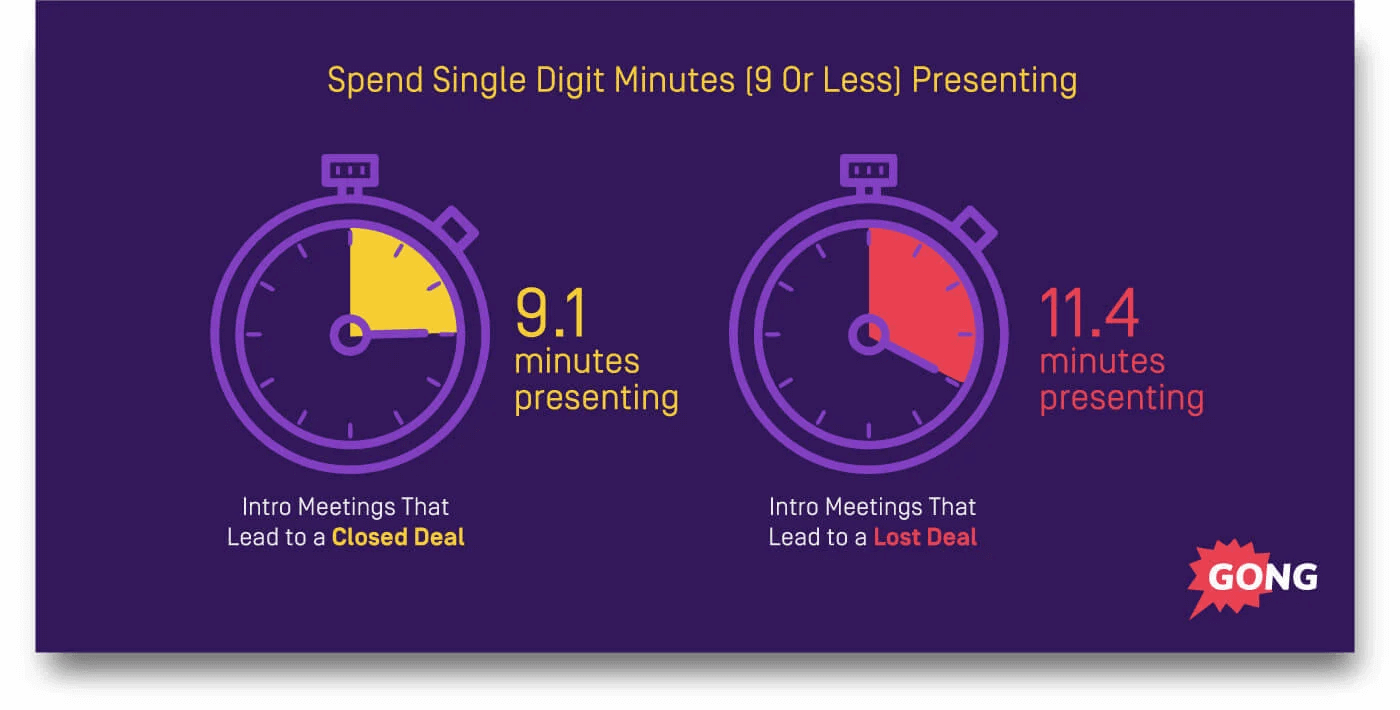
At the same time, make sure you arm your team with a winning sales deck. If you haven’t got one or think yours isn’t up to scratch, then steal our best sales deck for free.
5. Overcome objections
Almost every prospect will raise objections that your reps need to overcome. It’s a natural part of the sales cycle, but you need to train your reps to navigate it.
It’s essential your reps get context around each objection. Why is the price too high? Why are they hesitant to pull the trigger on a deal now? Open-ended questions are as important here as they are in the prospecting stage of the sales cycle. The more information your reps can gather, the better they will be able to overcome common objections.
Improve this step by:
Making your reps brush up on the best objection-handling techniques. These include:
- Speaking with authority
- Starting with a question
- Reframing the objection
Here’s an example of how reps can reframe bad timing to perfect timing.
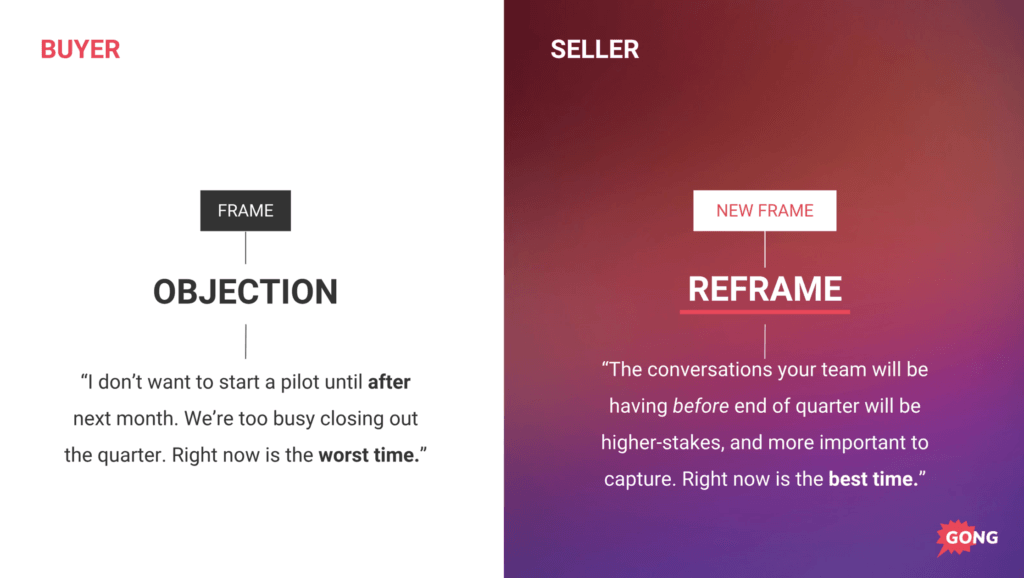
The prospect wants to wait until the end of the quarter before using a new solution. But because the sales rep understands that the buyer needs to close deals, he can reframe their objection in a way that shows the product is more important now than ever.
Of course, reframing only works if you have fully qualified your buyers and understand their pain points.
6. Close the sale
Your reps aren’t going to close the sale after the first presentation. Or when they handle the buyer’s first objection. It can take a long time to go from pitching to signing the contract, but your reps should never feel the need to hard-sell buyers.
If they have followed your sales cycle thoroughly, qualified the prospect, identified their pain points, and showed them exactly how your product can solve them, then the prospect should be eager to buy. However, the entire customer journey takes time
Improve this step by:
Having reps ask the right kinds of closing questions. These questions aren’t about tricking the buyer into making a purchase; they just encourage them to make the right decision. They include
- Confirming timing (“How can we execute an agreement by a specific date?”)
- Asking close-ended questions (“Do you see a world in which you move forward by this date?”)
- Understanding their decision-making process (“When does the decision-maker say yes?”)
- Overcoming hidden obstacles (“What could prevent us from signing a deal by this date?”)
7. Follow-up
Buyers can change their minds at any time, even after they’ve signed a contract. Following up with them decreases the likelihood of this happening and makes it easier for your reps to sell to them again in the future.
You’ll also have more chances of turning your buyer into a sales asset. Happy buyers make for excellent case studies ,as well as great sources for referrals.
Improve this step by:
Encouraging reps to proactively check in on buyers. Your reps should periodically see if buyers have any questions about the deal or your software, see how their needs are changing and whether there is potential to pitch them a new product.
In doing so, buyers will see your company and sales reps as trusted advisors.
Another awesome way to follow up is to ask buyers for a referral to close another deal. Here’s a sales email template to guide you:
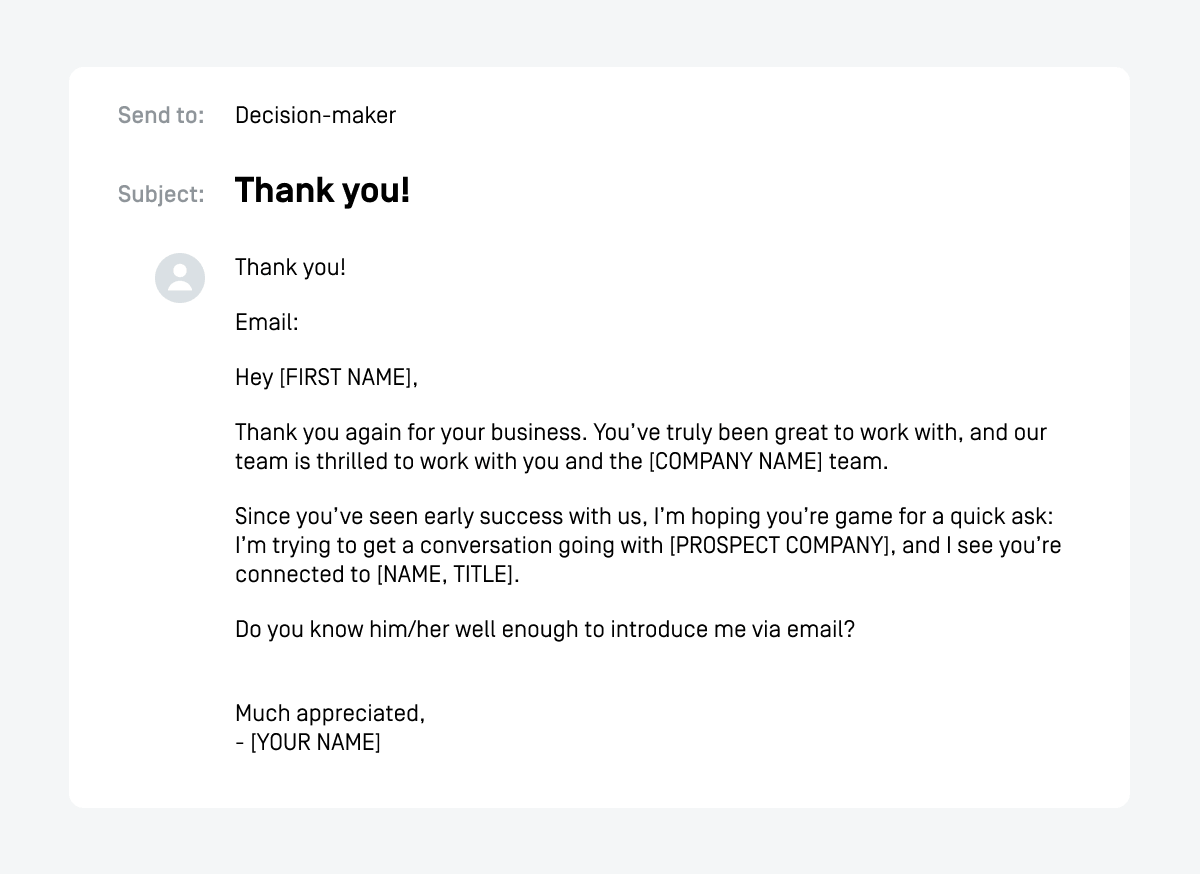
If your buyer shares a connection with another prospect you’re trying to book a meeting with, you can send an email like the one above asking for an introduction. Since you’ve helped them solve their problem, the law of reciprocity means there’s a good chance they’ll help you out, too.
Close deals faster with a strong sales cycle
When you have a well-defined sales cycle, you make it easier for reps to move deals through the sales pipeline. It also becomes easier to identify areas of improvement and forecast future revenue.
But you can take things even further with a revenue intelligence platform like Gong. Our platform provides even more insights into your sales processes, highlights problematic deals, and lets you forecast revenue with laser accuracy.
Request a demo today.